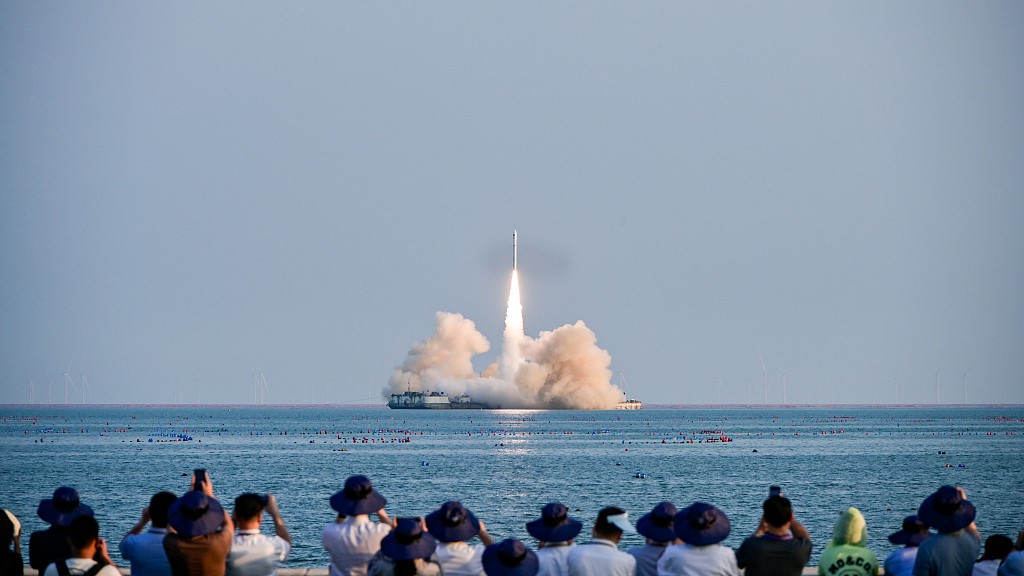BEIJING: China’s commercial aerospace sector, highlighted as one of the country’s strategic emerging industries at the Central Economic Work Conference held in December in Beijing, has seen an array of recent breakthroughs.
Most recently, a Smart Dragon-3 (SD-3) carrier rocket blasted off on Saturday, sending a group of nine satellites, including the world’s first in-orbit AI commercial hypersatellite, into planned orbit.
With a carrying capacity of 1.5 tonnes to the sun-synchronous orbit, the four-stage commercial rocket SD-3 is deemed to be a cost-efficient launch vehicle for sending satellites to form constellations.
On the same day, a group of 11 Geely-02 satellites was sent into space to construct a future travel constellation which boasts full coverage combining multi-dimensional carriers such as automobiles and consumer electronics products, to enable smart travel, unmanned systems, smart cities and more.On January 11, the Chinese start-up OrienSpace successfully launched Gravity-1, the world’s most powerful solid propellant rocket. Last July, Zhuque-2 Y-2, developed by Chinese private space launch provider LandSpace, became the world’s first methane-propelled rocket to successfully fly into orbit.
Meanwhile, more rocket companies have tested their reusable technologies, including the Kuaizhou, Hyperbola-2Y and Zhuque-3 rockets.
Zhao Xiaolong, chairman of the China Commercial Space Alliance, told China Media Group (CMG) that the commercial aerospace industry is ushering in a historic opportunity for development.
“This will greatly improve the ability to obtain commercial remote sensing data and the level of application services, and the commercial aerospace will inject stronger impetus into the construction of a space power,” said Zhao.
China has sent 270 satellites into space in the past year, of which 137 were commercial satellites, accounting for 65 percent. Thirteen of the launches were carried out by commercial rockets.
An accelerated pace can be anticipated in the country’s commercial space development in 2024, and China is forecast to have more than 1,200 commercial satellites in orbit within five years, according to the CMG report.
Beijing is planning the establishment of a dedicated “Rocket Street” as a research and production hub for the advancement of commercial aerospace, according to Jiang Guangzhi, director of Beijing Municipal Bureau of Economy and Information Technology.
It has laid out measures for the development of a satellite internet industry and provided support for 41 commercialization launch projects, with funding exceeding 100 million yuan ($14.08 million). –The Daily Mail-CGTN news exchange item






